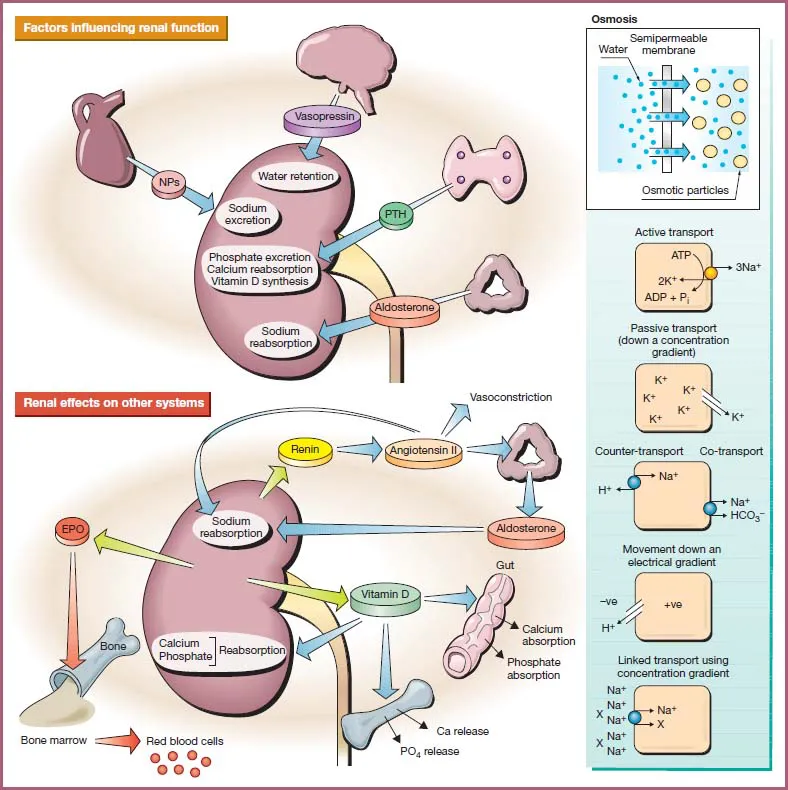
The Renal System at a Glance
Christopher O'Callaghan
- English
- ePUB (apto para móviles)
- Disponible en iOS y Android
The Renal System at a Glance
Christopher O'Callaghan
Información del libro
Highly Commended in Internal medicine in the 2017 BMA Medical Book Awards The Renal System at a Glance is a highly illustrated and practical guide to the structure and function of the kidney, renal, and urinary system. It also covers related disorders and abnormalities and their treatment.
Fully updated to reflect the many exciting new developments in the understanding of nephrology, this new edition has been restructured to better integrate basic science and clinical examples to the medical school curricula. New chapters on glomerular filtration and global kidney medicine are included, while the latest guidance and approaches to acute kidney injury, chronic kidney diseases, and renal replacement therapy have also been incorporated.
The Renal System at a Glance:
- Offers clear explanations on tricky topics such as electrolytes, fluid balance and acid-base handling
- Features new sections on glomerular filtration, and a new chapter on the global differences in kidney problems
- Includes cross-referencing between basic science and related clinical content
- Focuses on clinical disorders and investigations – ideal for those embarking on medicine rotations
- Illustrates each topic in a double page spread, complete with charts, graphs, and photographs
- An updated companion website is available at www.ataglanceseries.com/renalsystem featuring animations and MCQs
This new edition is the perfect guide for medical students, junior doctors, and allied health professionals, including specialist nurses, who wish to learn, or refresh their knowledge, on the kidney and renal system in health and disease.
Preguntas frecuentes
Información
Part 1
Introduction
Chapters
- 1 The kidney: structural overview
- 2 The kidney: functional overview
- 3 Development of the renal system
- 4 Clinical features of kidney disease
- 5 The kidney: laboratory investigations and diagnostic imaging

www.ataglanceseries.com/renalsystem
1 The kidney: structural overview

Gross anatomy
The kidney
Vessels and nerves
The draining system for urine
Microanatomy
The nephron
Interstitial cells in the kidney
The glomerulus as a filtration barrier (see Chapter 7)
2 The kidney: functional overview
